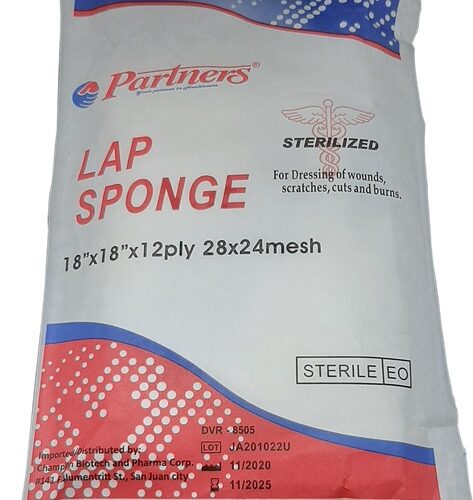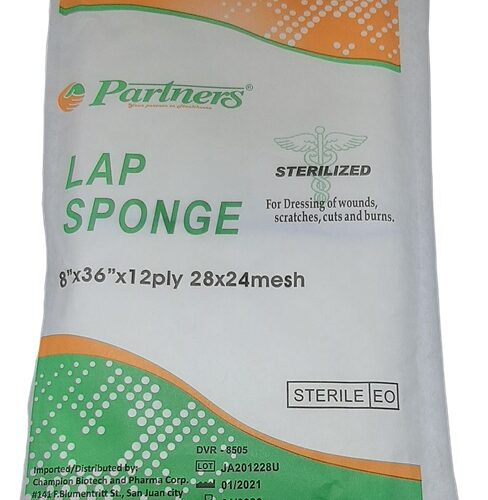Showing 209–224 of 444 results
-
IV Canulla G.20,10Pcs
0₱168.00> Surgitech
> I.V Cannula
> 20g
> 32mm 1.1mm-61ml/min
> Sterile
> Non-Toxic
> Non-Pyrogenic
> Single-use onlyA cannula is a thin tube that doctors insert into a person?s body cavity, such as their nose, or into a vein. Doctors use them to?drain fluid, administer medication, or provide oxygen. A person can use intravenous (IV) and nasal cannulas both in the hospital or at home.
-
IV Canulla G.22, 10pcs
0₱168.00> Surgitech
> I.V Cannula
> 22g
> 25mm 0.9mm-36ml/mim
> Sterile
> Non-Toxic
> Non-Pyrogenic
> Single-use onlyA cannula is a thin tube that doctors insert into a person?s body cavity, such as their nose, or into a vein. Doctors use them to?drain fluid, administer medication, or provide oxygen. A person can use intravenous (IV) and nasal cannulas both in the hospital or at home.
-
IV Canulla G.24 , 10pcs
0₱179.00> Surgitech
> I.V Cannula
> 24g
> 19mm 0.7mm/20ml/min
> Sterile
> Non-Toxic
> Non-Pyrogenic
> Single-use onlyA cannula is a thin tube that doctors insert into a person?s body cavity, such as their nose, or into a vein. Doctors use them to?drain fluid, administer medication, or provide oxygen. A person can use intravenous (IV) and nasal cannulas both in the hospital or at home.
-
IV Stand 5 Star Base and 4 IV Hook
0₱1,628.00> IV Stand
> With Wheels
> 5-Foot Star Base Plastic
> IV Pole with 4 Hooks Stainless Steel
> Adjustable with Knob Type Lock
> 0.75 ? 1.00? Diameter Tubing
> Mounted on Five (5) Caster Wheel
> Adjustable Height up to 220cm
Intravenous (IV) stands or poles are medical devices that are designed to hang bags containing intravenous fluids or medicines which need to be administered to the patient. They are used for the utmost hygienic purpose and are space savers. -
Kidney Basin Color Green, Plastic
0₱27.00, used to collect body fluids or serves as a container for various other liquids. It can also be used to place soiled bandages or used instruments during operating procedures.
-
Lap Sponges with x-ray line 12 x 12 x 12, 28 x 24 mesh
0₱62.00> PARTNERS
> Lap Sponge
> Sterile
> 12x12x12ply
> 28x24mesh
> For dressing of wounds
> Scratches
> Cut and burn
> 1 packTypical designs include absorbent cotton, usually washed to make sure it can soak up fluids. A common use for a laparotomy sponge is as a tool to absorb fluids around the surgical field. This can make it easier for the surgeon to see. In combination with suction, the sponges can keep the field as dry as possible, allowing the team to clearly visualize the area of interest so they can perform the procedure. Laparotomy sponges can also be used when it?s necessary to apply pressure, as they help distribute the pressure and stop bleeding.
-
Lap Sponges with x-ray line 18 x 18 x 12, 28 x 24 mesh
0₱88.00> PARTNERS
> Lap Sponge
> Sterile
> 18x18x12ply
> 28x24mesh
> For dressing of wounds
> Scratches
> Cut and burn
> 1 packTypical designs include absorbent cotton, usually washed to make sure it can soak up fluids. A common use for a laparotomy sponge is as a tool to absorb fluids around the surgical field. This can make it easier for the surgeon to see. In combination with suction, the sponges can keep the field as dry as possible, allowing the team to clearly visualize the area of interest so they can perform the procedure. Laparotomy sponges can also be used when it?s necessary to apply pressure, as they help distribute the pressure and stop bleeding.
-
Lap Sponges with x-ray line 8 x 12 x 12, 28 x 24 mesh
0₱51.00> PARTNERS
> Lap Sponge
> Sterile
> 18x18x12ply
> 28x24mesh
> For dressing of wounds
> Scratches
> Cut and burn
> 1 packTypical designs include absorbent cotton, usually washed to make sure it can soak up fluids. A common use for a laparotomy sponge is as a tool to absorb fluids around the surgical field. This can make it easier for the surgeon to see. In combination with suction, the sponges can keep the field as dry as possible, allowing the team to clearly visualize the area of interest so they can perform the procedure. Laparotomy sponges can also be used when it?s necessary to apply pressure, as they help distribute the pressure and stop bleeding.
-
Lap Sponges with x-ray line 8 x 36 x 12, 28 x 24 mesh
0₱81.00> PARTNERS
> Lap Sponge
> Sterile
> 8x36x12ply
> 28x24mesh
> For dressing of wounds
> Scratches
> Cut and burn
> 1 packTypical designs include absorbent cotton, usually washed to make sure it can soak up fluids. A common use for a laparotomy sponge is as a tool to absorb fluids around the surgical field. This can make it easier for the surgeon to see. In combination with suction, the sponges can keep the field as dry as possible, allowing the team to clearly visualize the area of interest so they can perform the procedure. Laparotomy sponges can also be used when it?s necessary to apply pressure, as they help distribute the pressure and stop bleeding.
-




